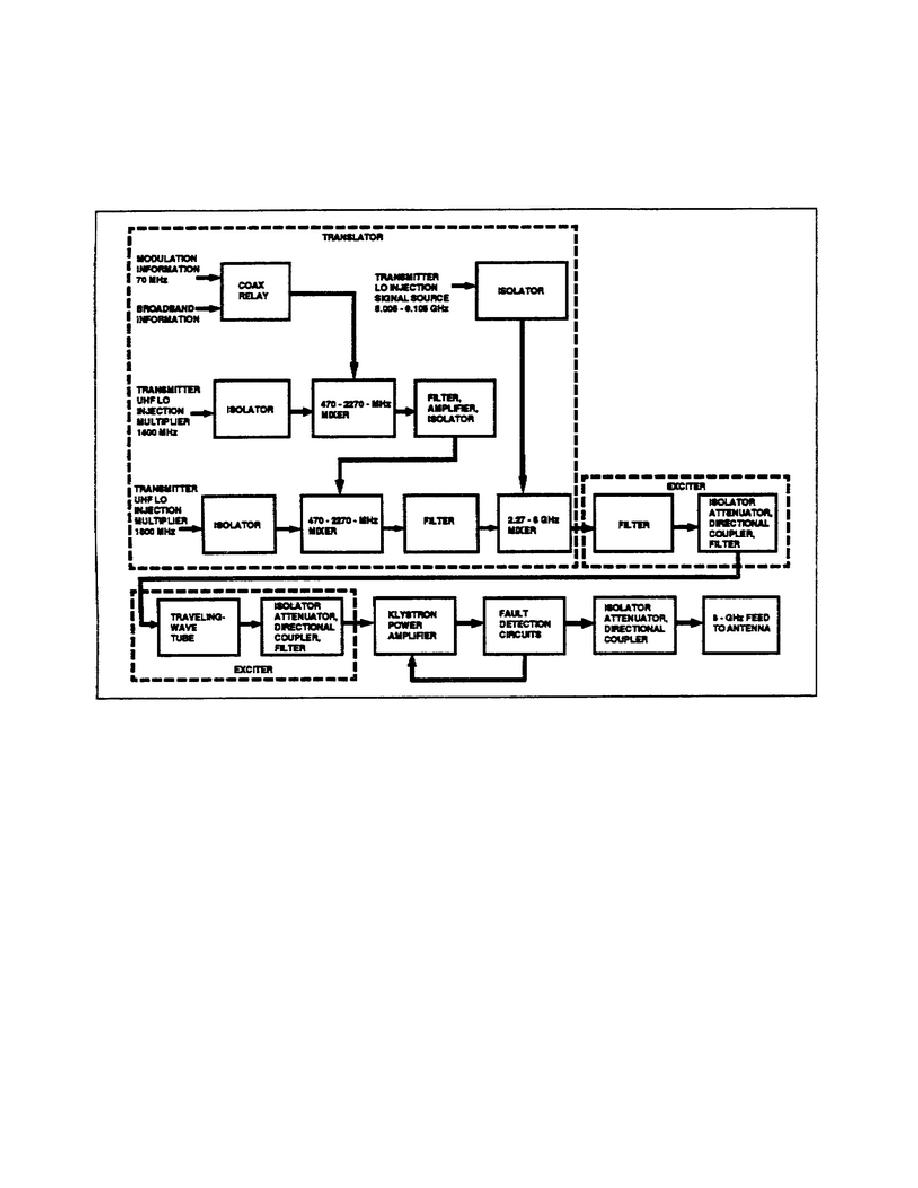
LEARNING EVENT 32: TRANSLATOR
The translator provides the necessary mixing action required to prepare the modulated signal for transmission.
The translator unit is composed of isolator., buffer amplifiers, filters, mixers, and attenuators. (See Figure 2-
17.)
Figure 2-17. Transmitter subsystem.
LEARNING EVENT 33: TRANSLATOR OPERATION
1. Each isolator allows the energy that is propagated in a forward direction to pass through with negligible
opposition, but energy that is propagated in a reverse direction is shunted to a dissipating element which
effectively absorbs this reverse or backward-wave energy.
2. The overall translating process uses three mixing stages. If a single mixing stage is used with the 70-MHz
modulated signal mixing with the final-oscillator-injection voltage, two disadvantages are apparent. The final
oscillator-injection voltage would have to approach the final transmitted frequency. This is not too important in
itself but it creates a major problem in that both the upper and lower sideband frequencies are very close to the
carrier frequency. Any attempt to reduce the amplitude of the undesired lower sideband without affecting the
upper sideband is difficult. The use of multiple mixers provides easier suppression of the undesired sideband
and other spurious signals.
2-21
SS0031



 Previous Page
Previous Page
